The Future Without Fracking
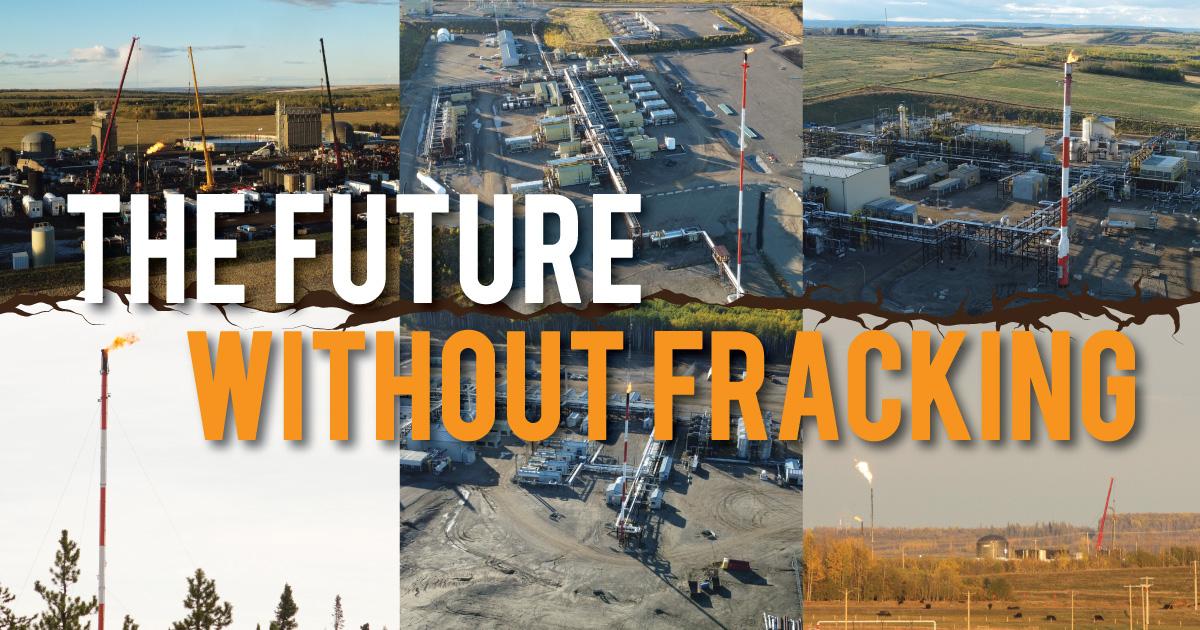
CLIMATE DISASTERS ONLY GET WORSE UNTIL WE STOP BURNING FOSSIL FUELS
Everyone has now felt the impacts of the climate emergency. In BC, most of us have sweltered under oppressive heat and choked on skies filled with smoke. We’ve lost jobs to the mountain pine beetle epidemic and washed out highways. One billion sea creatures died in a single heat wave, with cascading impacts on ocean life and fishing communities.
First Nations have lost access to traditional foods that supported them for millennia. Entire communities have been wiped off the map by catastrophic wildfires and floods. Hundreds of people have died in stifling hot homes or been washed away by landslides during record rains.
These climate disasters are a direct consequence of pollution from the extraction and combustion of fossil fuels. Unfortunately, they’ll just keep getting worse until we end this destructive practice.
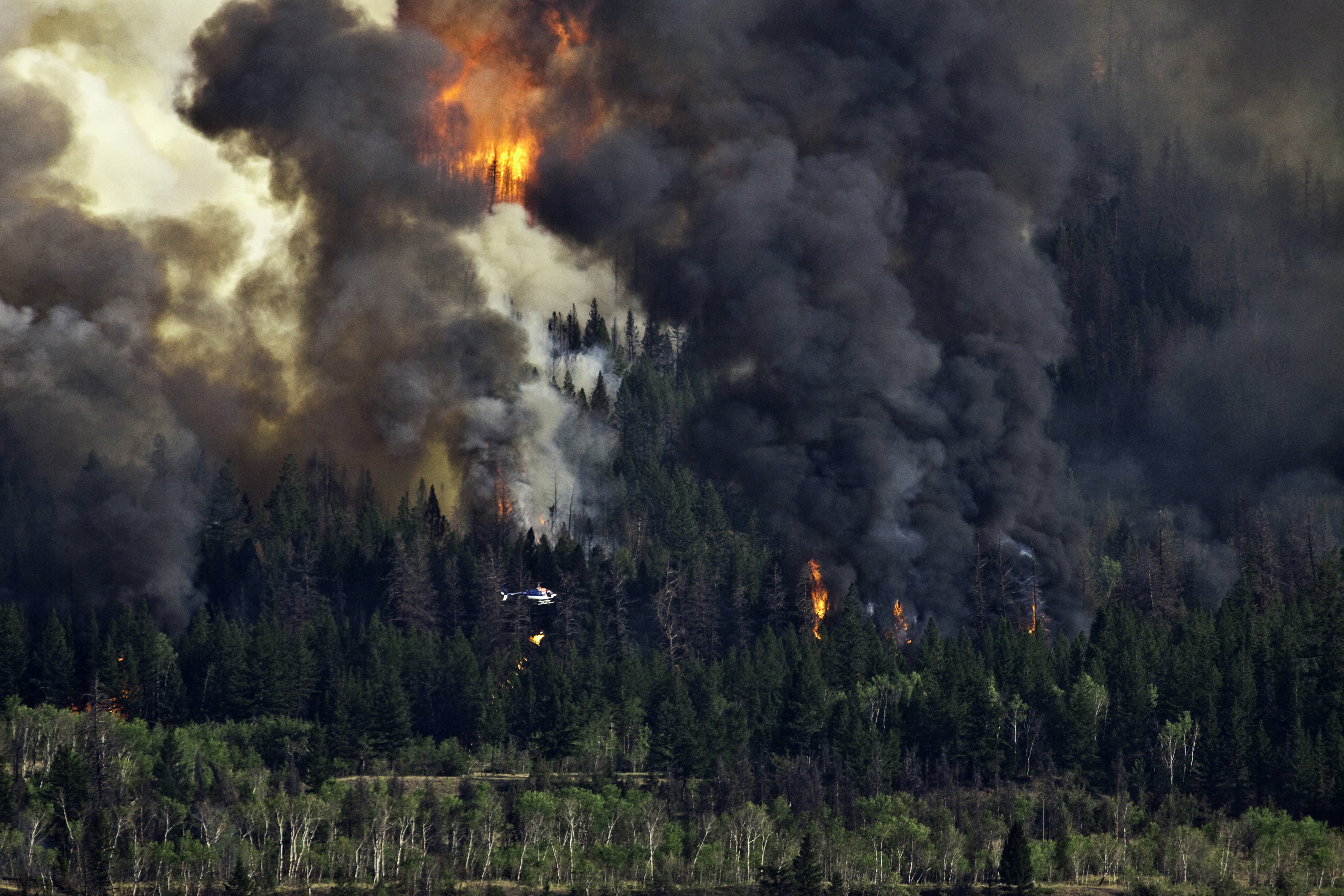
It can feel pretty bleak but the good news is the latest science says once we are able to stop this pollution entering the atmosphere, the Earth’s climate will stabilize relatively quickly. The sooner and faster we act, the less homes, jobs, nature and lives we will lose in the meantime.
- Join the movement to end fracking in BC
-
In BC, that means winding down the province’s most polluting industry — fracking for gas — instead of current plans to expand it. Liquefied natural gas (LNG) proposals on the coast would double the production of fracked gas and put the government’s climate commitments out of reach.
Premier David Eby agrees, “We cannot continue to expand fossil-fuel infrastructure and hit our climate goals.” He needs to show he understands that promise. It’s time for BC to once and for all shut the door on fossil fuel exports that lock us into decades more pollution. Eby must abandon his government’s support for LNG proposals and set a deadline to end fracking.
No amount of greenwashing can change the facts. Gas is extremely potent at heating the planet. There is no safe world where fracking companies continue to extract gas and export it through LNG facilities for decades to come.
New LNG proposals cannot move forward without more provincial support, whether it comes in the form of direct subsidies, tax breaks or discounted electricity. BC Hydro and its ratepayers should not be paying to build more new dams or high voltage lines so LNG facilities can use renewable energy to greenwash their products. From the United Nations Environment Programme to the International Energy Agency, experts are telling us the world cannot handle any new coal, oil and gas projects. BC must do its part to protect its residents and people around the world from escalating climate disasters.
LNG proponents claim it will replace other fossil fuels, but no amount of greenwashing can change the facts. Gas is extremely potent at heating the planet. There is no safe world where fracking companies continue to extract gas and export it through LNG facilities for decades to come.
Thankfully, the world beyond fossil fuels is one with good jobs, clean energy and resilient communities. BC has everything it needs to make this leap, it just needs to embrace it wholeheartedly and stop trying to have it both ways. Read on to find out more about what’s at stake in the fight to end fracking.
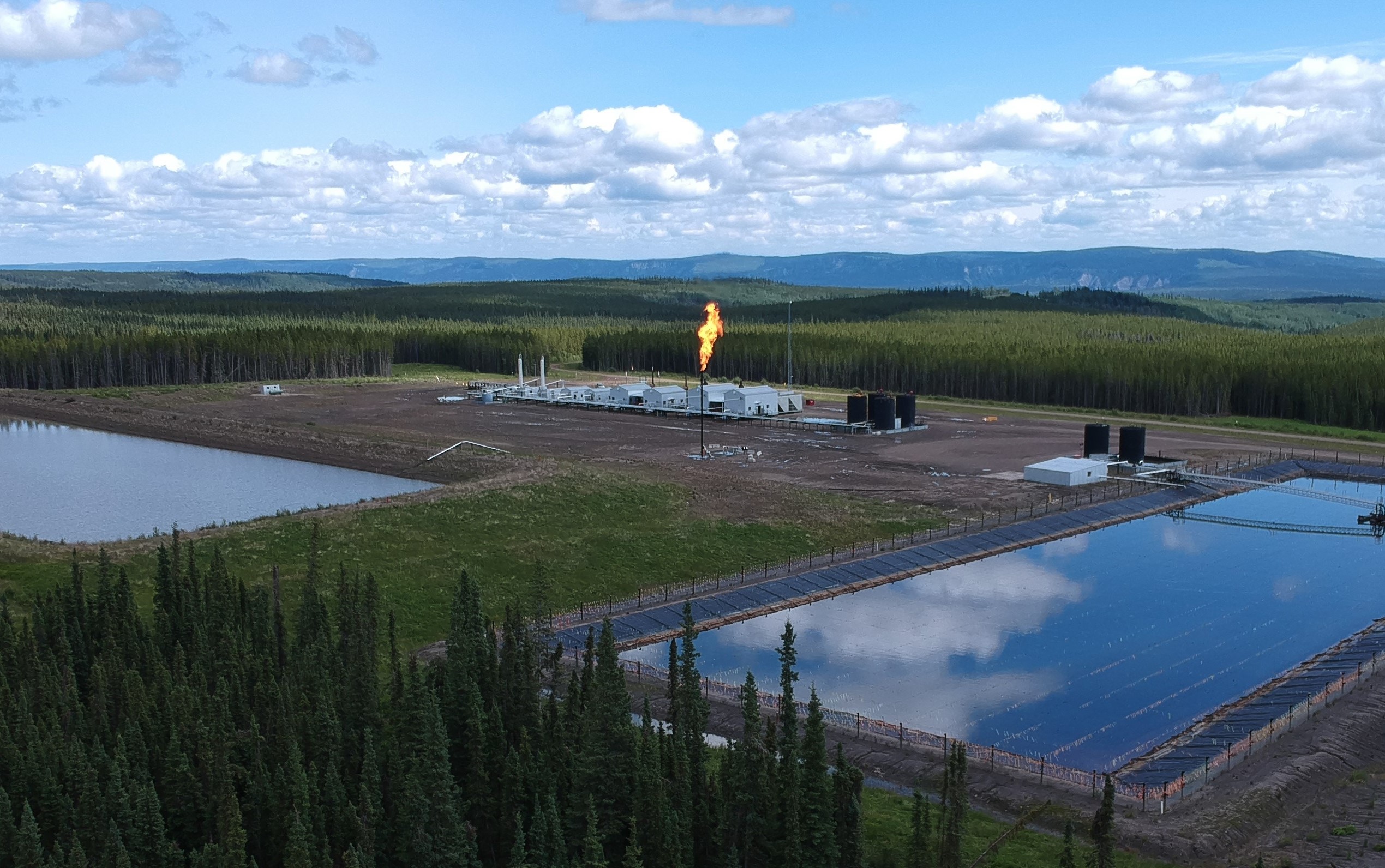
FRACKING IS A CLIMATE BOMB
BC’s fracking industry operates in the northeast corner of the province, far from the biggest population centres. Yet its impacts are felt by everyone here andaround the world. That’s because the gas these companies are after is methane, which heats the planet even faster than other fossil fuels.
Because of the shape of the methane molecule, it traps 86 times more heat than carbon dioxide, the climate pollution most of us are familiar with. Though it only lasts in the atmosphere for a few decades, the gas packs a powerful punch while it’s there. In fact, it’s responsible for a quarter of the global heating we’re currently experiencing.
Methane spills into the air from the moment fracking companies shatter the shale beds that contain it deep underground. After drilling a well, they pump freshwater, silica sand and a toxic chemical cocktail down at high pressures to break open the rock and release the gas.
Fracking companies use a tremendous amount of water diverted from rivers and streams in the Peace River region every year — as much as 12 Olympic-sized swimming pools for every well. Over the past few years, they’ve had to stop drilling multiple times because droughts meant taking more water would endanger fish.
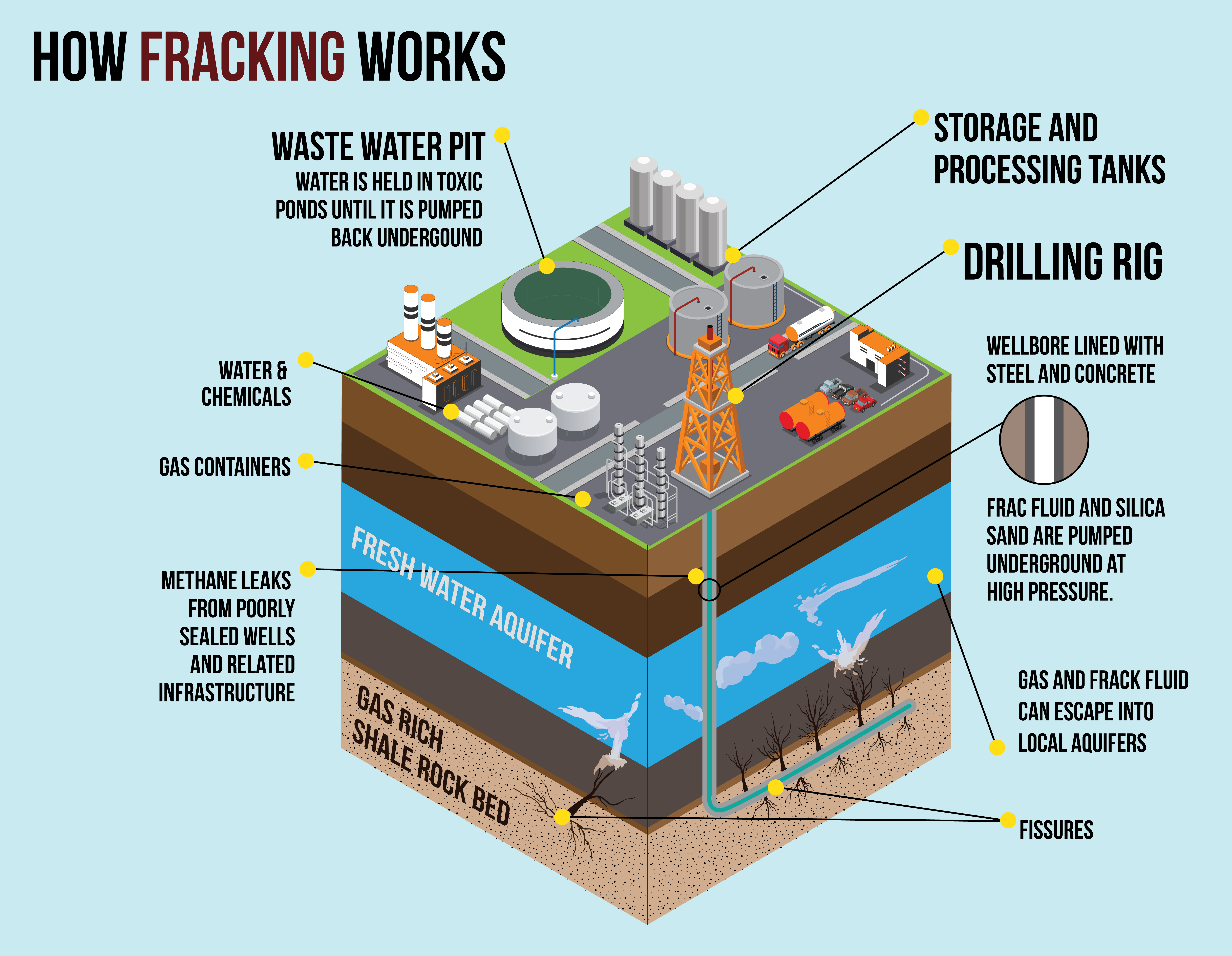
After fracking, gas feeds through a labyrinth of pipelines and plants where leaks and venting are common. Whether it ends up in a kitchen stove or a tanker crossing the Pacific Ocean, methane continues to seep out wherever it can even as it reaches the consumer. When it’s finally ignited, it still creates plain old carbon dioxide that heats the planet for generations to come.
While BC wants to reduce and eventually eliminate methane pollution, it has offered no detailed plans to do so. In the meantime, the province is looking at another 18,000 fracking wells beyond the 30,000 already in the ground if proposed LNG plants move forward. That will only make it more challenging to meet these commitments.
THERE’S NO ROOM FOR NEW GAS
Provincial leaders often claim they’ve somehow made LNG fit within the CleanBC climate plan. It’s meaningless greenwashing. In reality, the province is not on track to meet its climate commitments so nobody can claim they’ve made room for new polluting projects. If the LNG Canada facility, the only one currently under construction, comes online in 2025 it would undo any meager progress BC has made and then some.
Having the world’s “cleanest” LNG does not mean B.C.’s gas is compatible with a safe climate.
But there are still five more LNG proposals on the books. If BC’s targets actually had the teeth the provincial government claims they do, these companies would not still be here. Setting a target does not mean you will meet it — as shown by the government’s failure to meet every climate goal it’s ever set for itself. While the province wants the gas industry to cut its climate pollution 33 to 38 per cent by 2030, it tries to use the existence of this target to justify new LNG projects that will only ensure it’s never met.
Another regular talking point from BC NDP MLAs is they’ve got the best climate plan in North America. Maybe that was true when it was introduced in 2018. But since then Quebec, California, Washington and New York have all taken action to end fracking. That’s not a symbolic gesture. There’s a growing consensus the world must cease both production and consumption of fossil fuels. Companies and governments have committed to reach net zero emissions to greenwash investments in fossil fuels, but the United Nations has confirmed that means no new coal, oil or gas projects.
Having the world’s “cleanest” LNG does not mean BC’s gas is compatible with a safe climate. Instead of helping countries in Asia end their reliance on dirty energy, it would only delay the transition to renewable electricity. Rather than replace some other country’s polluting gas, it would just add more fossil fuel to the fire. Global gas production and demand must significantly decline this decade to get the world on track to meet its climate goals.
TEN THOUSAND TINY PIPELINES
In 2021, gas utility FortisBC connected 10,000 new customers to their fossil fuel distribution network. Each of these homes and businesses will continue to burn fracked gas until their owners eventually shut it off and switch to electricity. Decades of climate pollution will result. All the technology exists for new buildings to operate entirely with renewable energy, yet the provincial government continues to allow new fossil fuel connections.
Across the border, Washington State began requiring all new buildings to use electric heat pumps instead of fracked gas this year. California will do the same by 2030. British Columbia could easily update its building code to ban gas space and water heating. But so far provincial leaders have refused, likely because of a huge lobbying effort from FortisBC, which lobbied the province more than 70 times in 2022.
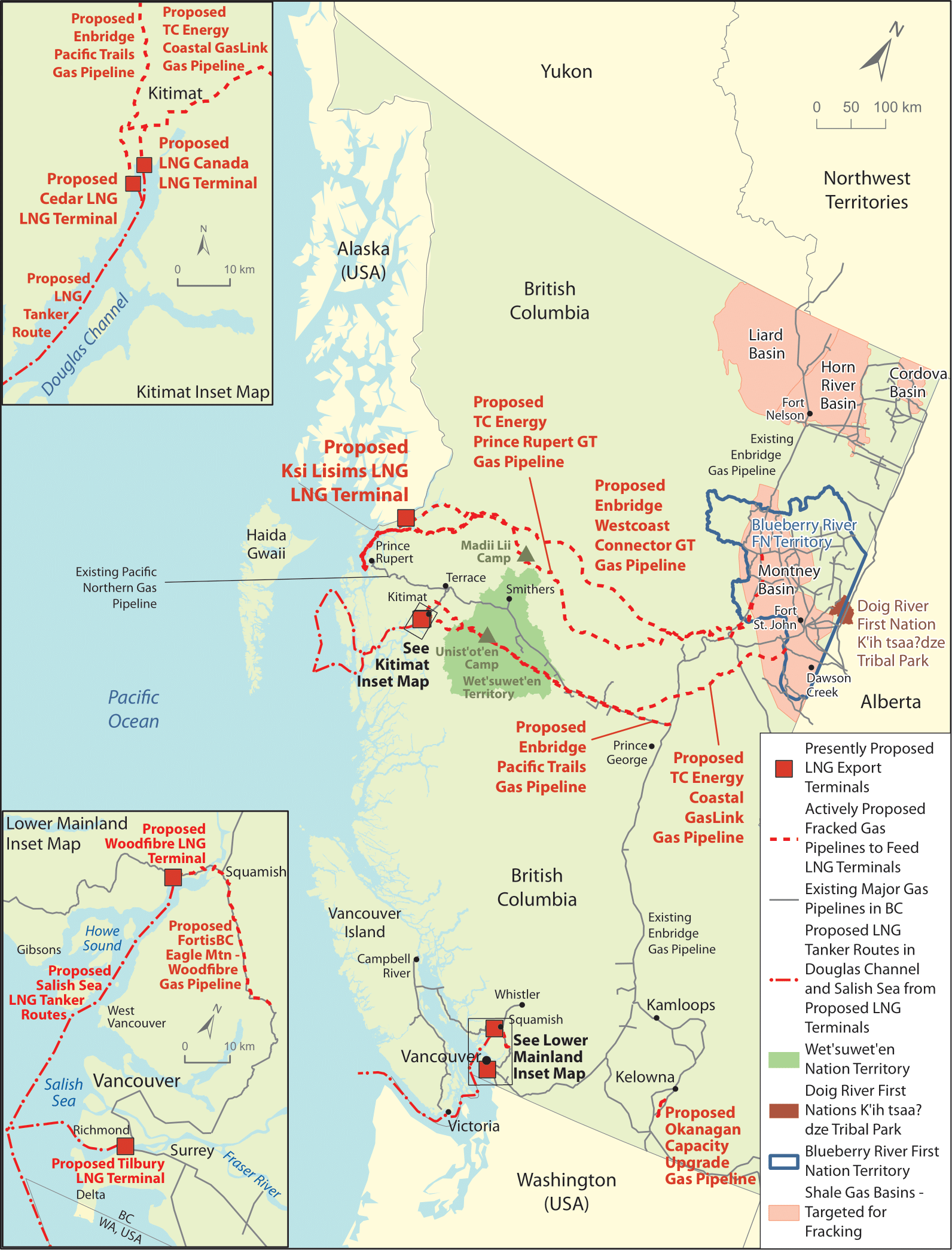
BC’s largest gas utility — and most insidious fossil fuel company — has managed to position itself at the centre of the province’s climate plan. FortisBC has pitched a complicated scheme where it buys biomethane, or gas harvested from organic waste, from landfills and feedlots all over North America. Under that guise, it then offers its customers in BC “renewable” gas, though the actual gas they receive continues to come from fracking.
While a restaurant across the continent is now cooking with biomethane, there’s only so much to go around. Either the climate benefits get double counted or FortisBC is simply robbing other jurisdictions of low-hanging fruit in cutting their own pollution.
Eby must ban gas in the construction of new buildings to put BC on track to meet its climate commitments.
This is only the tip of the rapidly melting iceberg that is FortisBC’s greenwashing. It proposes to decarbonize by running their entire gas network on “renewable” gas, but its own research shows at most two per cent of existing supply could come from actual renewable sources. The balance would come from two fuels: blue hydrogen, a highly experimental technology that uses steam to split the carbon from fracked gas and bury it underground; and gasses made by heating wood in the absence of oxygen and derived from logging forests across the province. Neither of these sources are without climate pollution and major ecological impacts.
Even if FortisBC finds less polluting gasses, it’s still better for the climate to save them for its existing customers. Their plans are no justification for continuing to hook up new connections to the network when there are readily available electric alternatives. Eby must ban gas in the construction of new buildings to put BC on track to meet its climate commitments.
KEEP LNG OFF THE SEA HEAL THE LAND AND PUT PEOPLE TO WORK
Most of the LNG proposals in BC are for gas exports to Asia. But Tilbury LNG on the Fraser River in Delta would also be used to refuel ships coming through the Port of Vancouver. Like the ferries that run on LNG, marine shipping is another market fracking companies want to reach to prolong the use of their gas. Just as we’ve seen with BC Ferries, however, LNG vessels are at best a liability. New electric ferries are already available, but we will be stuck with polluting ships for decades to come.
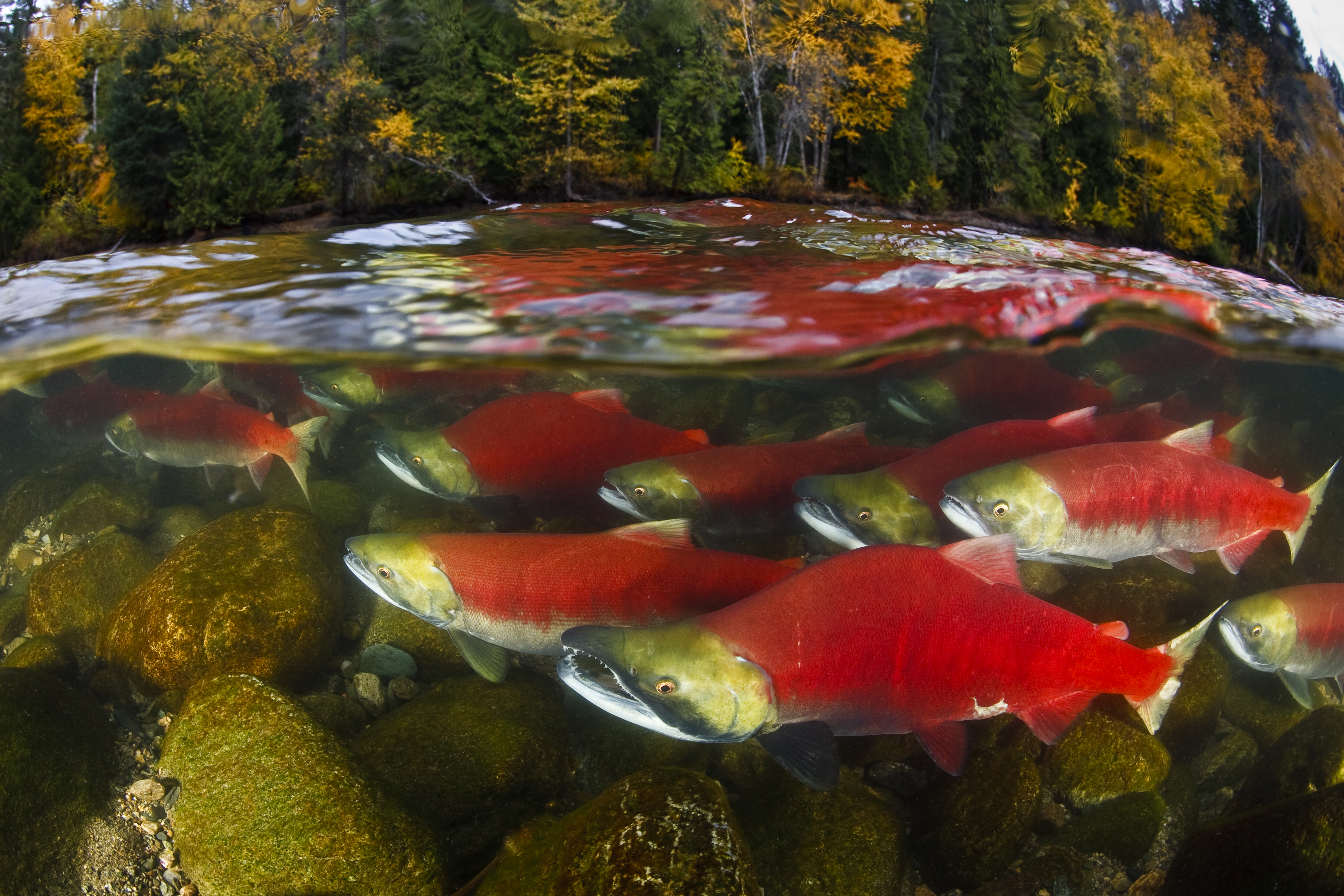
Similar dynamics will play out on a global scale that make it hard to justify building new fossil fuel infrastructure like Tilbury LNG. While the technology to completely decarbonize ocean vessels is in its early days, that is the clear goal of the marine shipping industry. The World Bank studied the merits of LNG as a marine fuel and found it would have a “limited role” in the transition, even over the short-term, because of the risk of locking in pollution.
It also highlighted the questionable climate benefits of switching to LNG for marine fuel. Because methane spills into the atmosphere at every step, from fracking to transport across the sea, in many cases switching to LNG can actually be significantly worse for the planet. Research from the International Council on Clean Transportation shows, using the most common engine and the most relevant timeline, shipping with LNG can be up to 82 per cent worse than standard bunker fuel. Even in the best case scenario, it can only achieve a 15 per cent reduction in climate pollution.
Did you know?
Fracking has destroyed an unfathomable amount of forest and farmland in northeastern B.C. Between access roads, seismic lines, well pads, wastewater ponds, processing plants, pipelines and compressor stations, the industry covers an area more than five times the size of Alberta’s tar sands mines.
GAS IN AN ERA FOR INDIGENOUS RIGHTS
Indigenous Peoples are the first to experience the impacts of climate disasters and too often given the least support to deal with them. Wildfires, floods, droughts and storms come with an entirely new set of challenges for communities already coping with centuries of colonialism.
First Nations are the only Indigenous peoples that hold inherent title and rights to lands and waters across what is now known as British Columbia. They have consistently called for action on climate change and provided recommendations on how the provincial government can integrate their priorities in its plans. Yet there’s a wide diversity of opinion among and within Indigenous communities about gas development in their territories and in the province.
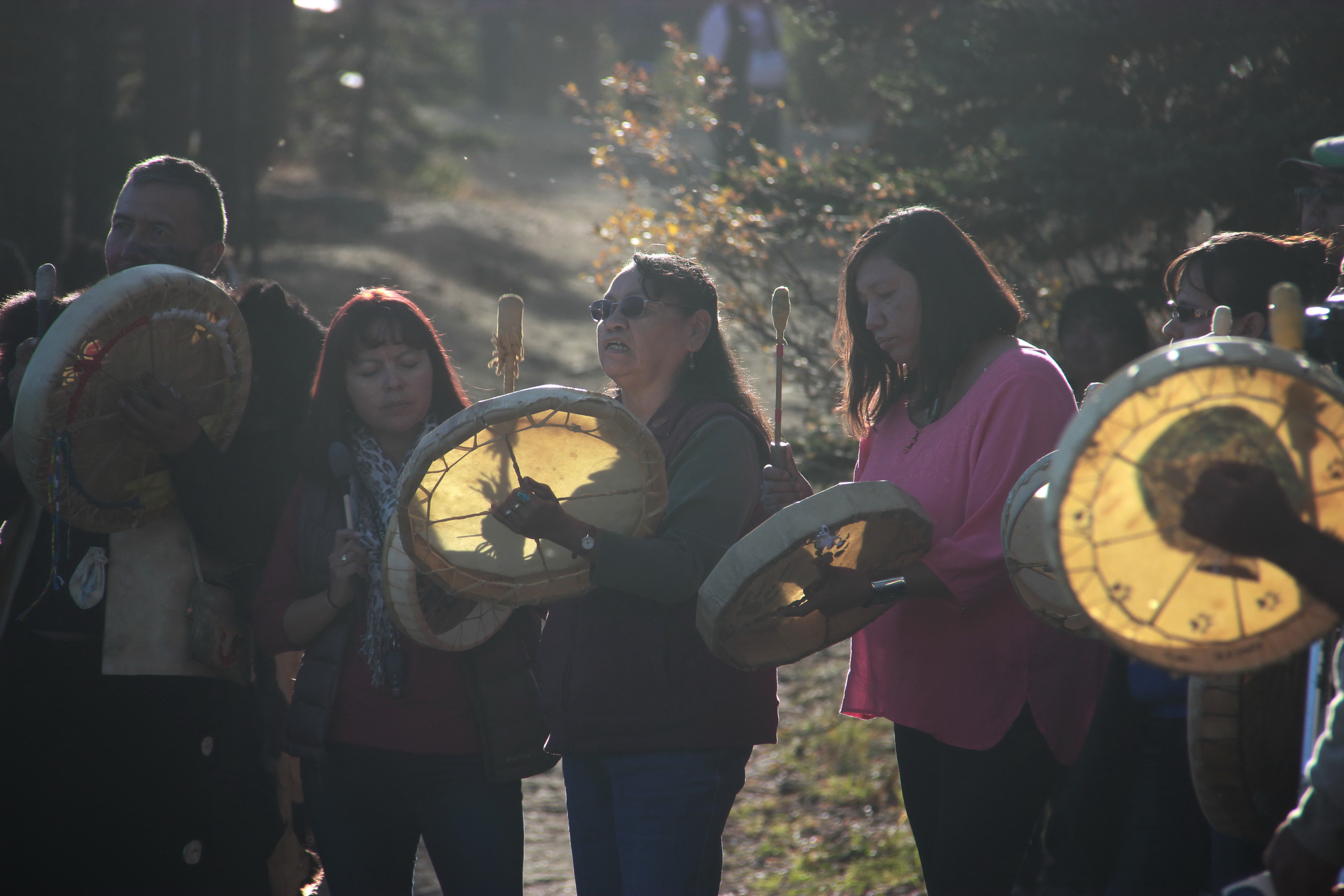
Many First Nations and their community members have strongly opposed fracking, pipelines and LNG plants on their territories. At the same time, other Indigenous leaders have welcomed the gas industry as a source of revenue for their communities.
It is almost always more complicated than outsiders understand. However, two simple truths are far less complex than the decisions any individual or nation makes about gas development. Humanity must stop burning fossil fuels if we’re going to stop the heating of our world. And all of us must respect the right of Indigenous Peoples to self-determination to avoid perpetuating harm.
It is precisely the denial of this right that has degraded First Nations’ territories and resources, kept many Indigenous communities in poverty and limited their options to seeking partnerships with gas companies. If we succeed in taking on the fossil fuel industry and maintaining Earth’s life support systems, it will be because First Nations are able to realize their own visions for their territories and communities.
HEAL THE LAND AND PUT PEOPLE TO WORK
Treaty 8 Nations in northeastern BC have lived among the gentle rivers and rolling foothills since time immemorial. Europeans showed up in the early 1800s and settled in small agricultural communities. But in the last 20 years, gas development has quickly transformed the region to the point where 84 per cent of Blueberry River First Nations’ territory lies within half a kilometre of industrial disturbance.
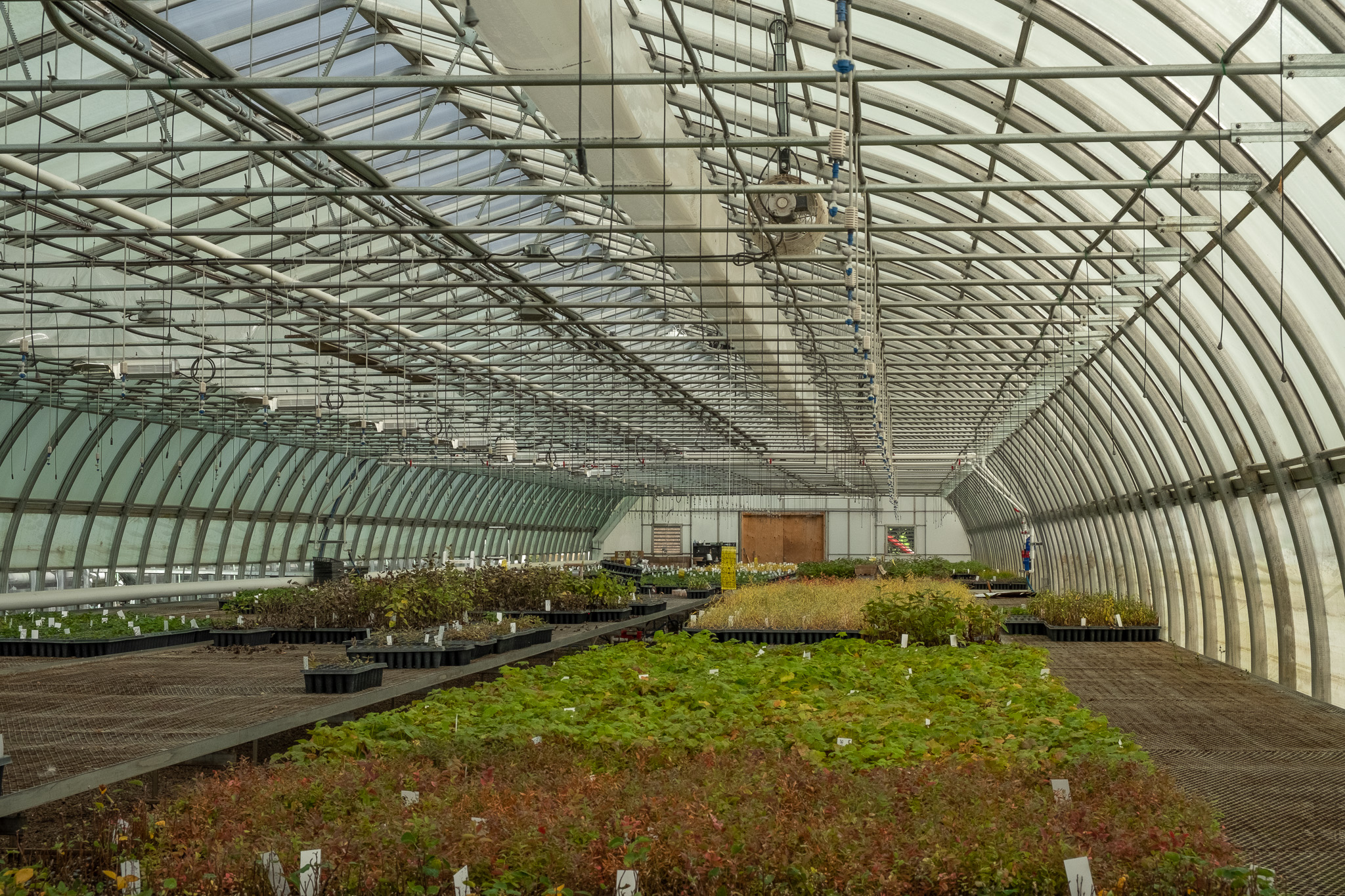
The Supreme Court of BC found this enormous cumulative impact was a violation of Treaty 8, the agreement governing the Crown’s relationship with Indigenous Peoples in the region. As a consequence of the court ruling, the permitting of new fracking stalled and negotiations began over how the province can abide by its treaty obligations.
Treaty 8 Nations have big plans to restore their homelands. While gas companies fold their operations at the slightest change in economic headwinds, the entire industry is merely a temporary bump on Indigenous Peoples’ millenia-long stewardship of their territories. First Nations in the area are already working to heal the land.
Blueberry River is planning for large-scale restoration of its territory. Saulteau and West Moberly run a native plant nursery on their reserve which helps rehabilitate old well sites properly. Doig River has declared a huge swathe of its territory a tribal park, preventing further gas development there. These efforts create jobs for community members that reflect their skills and values — and show a path forward for a thriving green economy.
POWER PAST FRACKED GAS
Every technology we need to replace fracked gas in our homes and businesses is available and viable today. Outside BC, gas is often used in power plants to provide reliable electricity where wind and solar may fluctuate with changing weather. But other forms of renewable energy like tidal, geothermal and hydro offer similar predictable power, and battery technology makes it possible to store electricity for when customers need it.
Most of the fracked gas used in BC is for space and water heating in furnaces and boilers. But electric heat pumps can keep our homes warm and showers hot by using a compressor to extract heat from the outdoors. They work even when it’s very cold and run at extremely high efficiency because they are not generating heat but simply moving it — no furnace or fireplace required. Heat pumps also work in reverse, providing cooling during summer heat waves, which is critical as global temperatures rise.
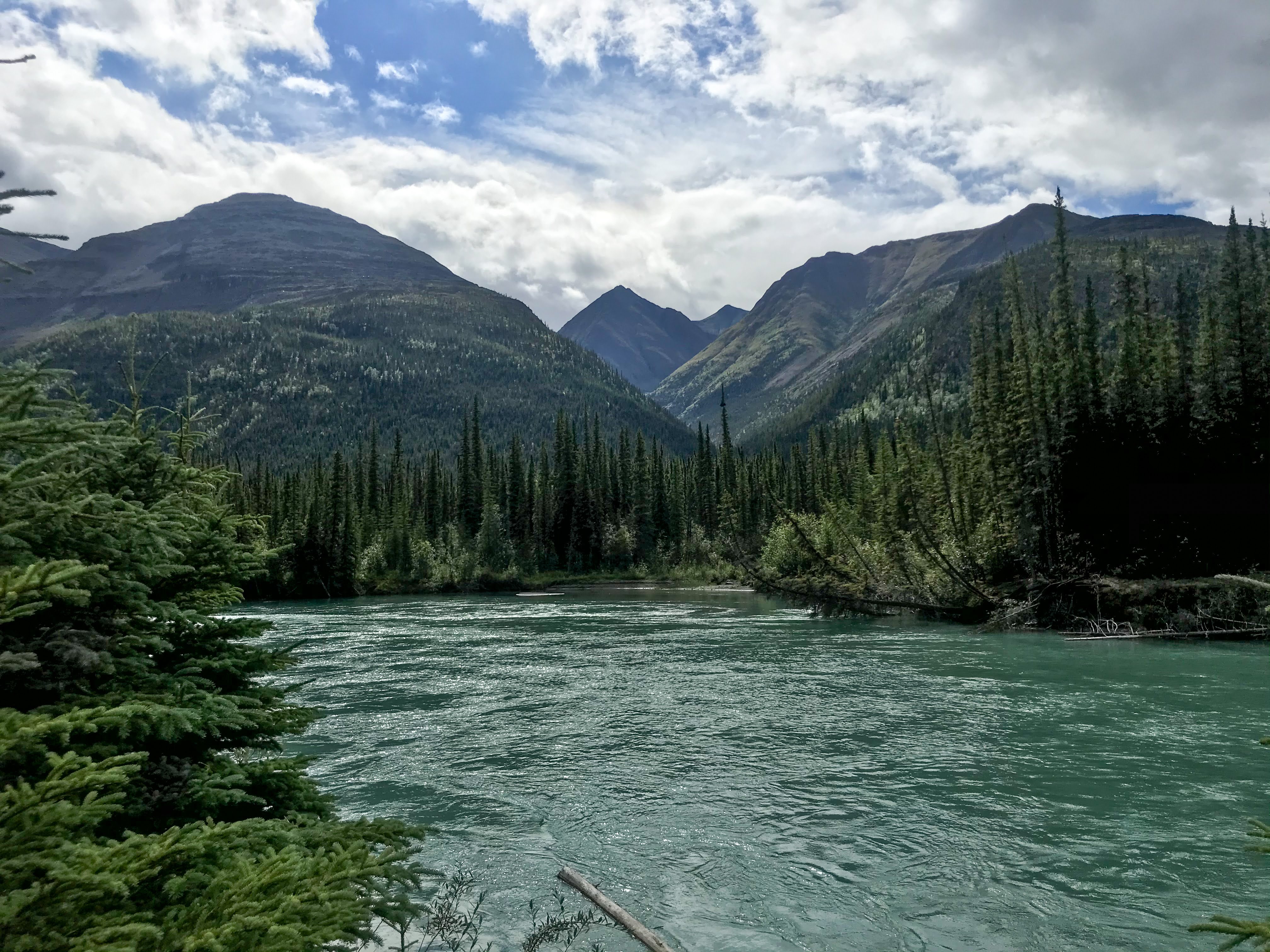
Avid cooks may bristle at the thought of trading in their gas stove for an electric coil. But new technology makes the switch an upgrade. Induction stoves use magnets to heat the iron in steel pots and cook the food inside. By all accounts they’re a better option than gas, and many commercial kitchens are switching over because they don’t heat the room like other stoves.
Manufacturers of steel, glass and other products use fracked gas to heat their furnaces, but that too can be replaced with renewable energy. Simple wind and solar electricity cannot generate the high temperatures industry needs alone. But run that current through water and it will create green hydrogen that can burn as hot as necessary with no pollution.
Ending fracking is not about sacrifice. British Columbians can live without gas — there’s no other option. It’s only a matter of provincial leaders having the political will to reject the fossil fuel industry’s false solutions and promote the use of alternatives.
Here's my gift for a frack-free BC!
Your donation supports critical climate action work — from canvassing door to door in critical neighbourhoods in B.C. with information on fracking to mobilizing people to meet with their elected representatives. Thank you!